How Does a Cordless Electric Kettle Work?
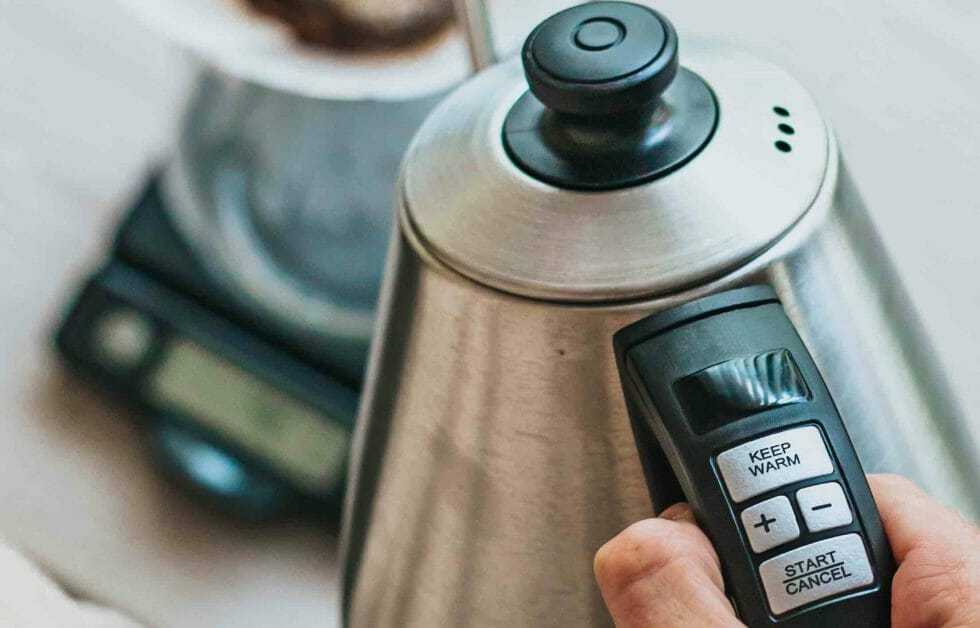
Cordless electric kettles are a great way to save energy and have hot water at the touch of a button. They work quickly and reliably, are easy to figure out, and are generally safe to use; they are a must-have kitchen appliance. But are you wondering how they work?
They work similarly to corded electric kettles but are detachable from a ‘base,’ which is the actual corded part. The container has a heating element that heats the water. When a set temperature is reached, as detected by a built-in thermostat, the switch is activated to shut the kettle off automatically.
Continue reading to know how they work in more detail.
Cordless Electric Kettles
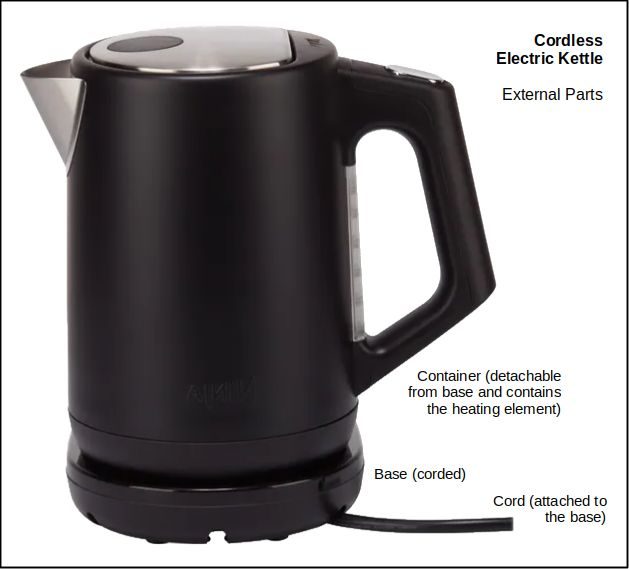
Carpenter Electric Company invented electric kettles in 1894. The first cordless type appeared in 1986, which allowed the jug to be removed from the rest of the unit. [1]
Cordless electric kettles are similar to their corded alternatives, but with one obvious difference – they don’t have a cord to plug the kettle directly into an outlet. This makes them more portable and convenient to use than corded electric kettles.
There is a cord, the base that is fitted with it and plugs into an outlet (see picture above). Some cordless electric kettles can also get power from a built-in battery, making them even more portable.
The container houses an internal heating element that heats the contents. It usually has a capacity of 1.5 to 2 liters. The container is attached to the base but can easily be detached or removed.
A cordless electric kettle usually consumes between 1,200 and 2,000 watts. However, the wattage can surge to 3,000 watts, making it an appliance with a very high wattage rating that requires a high current, which can significantly affect electricity usage. [2]
How a Cordless Electric Kettle Works
Outline of the Process
- Content – You fill the kettle with water (or other liquid).
- Base – You place the kettle on the base.
- Power – You connect the cord to an outlet and switch on the power.
- Temperature – You set the desired temperature and start the kettle.
- Heating – The kettle’s internal heating element heats the water.
- Thermostat – The thermostat sensor detects when the set temperature is reached.
- Auto shut-off – The internal switch turns the kettle off.
- Pouring – The water is ready to pour.
General Process in Detail
A cordless electric kettle starts working when it is filled with water, set on its base, and the base is plugged in.
The user usually has to set the desired temperature. This activates the heating element inside the kettle, which heats the water. The heating element is normally made of nickel-plated copper, a nickel-chrome alloy, or stainless steel. [3] The heat is produced due to resistance in the element to the flow of electricity and is radiated in the water and distributed by convection.
A thermostat monitors the temperature, and other electronics are present to control the automatic shut-off when the set temperature is reached. That is, upon reaching this temperature, the kettle automatically shuts off. You can usually set a temperature in the range of 140°F-212°F (60°C-100°C). The maximum value in this range (212°F/100°C) is the boiling point of water.
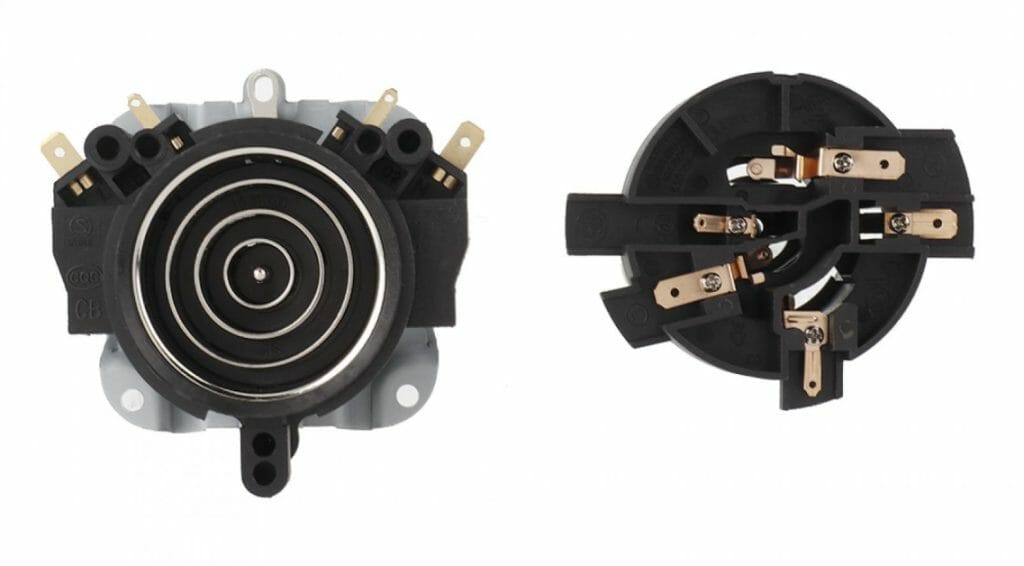
A simple switch that can turn the kettle off is a bimetallic strip. It has two thin metallic strips bonded, such as steel and copper, with different expansion rates. The automatic function is also a safety measure to prevent overheating.
This is the general process describing how cordless electric kettles work. It may vary slightly for different types of electric kettles.
Precautions
The kettle must be filled with enough water to fully submerges its heating element. Otherwise, it can burn out.
You must be careful if your cordless electric kettle does not have an automatic shut-off mechanism.
You should remember to switch the kettle off manually as soon as you see steam emanating from its spout, which indicates the water has started boiling. This will prevent electricity from being wasted and the water level from falling below the heating element’s upper surface. [4]
However, some models have an extra safety feature that ensures they don’t turn on unless there is enough water inside.
Types of Cordless Electric Kettles
Different types of cordless electric kettles differ in their features, and some also differ slightly in how they work compared to the general process.
Standard Cordless Kettle
Standard cordless kettles work as in the general process described above and usually hold up to 2 liters of water. Still, some basic types might not offer the option to set the desired temperature. However, the safety measure of automatic shut-off should be expected. In some models, the base is also detachable, which makes it even easier to store and take around.
Feature Rich Cordless Kettles
Featured cordless kettles are designed to offer more features than the standard or basic models.
A typical extra feature is precise temperature control or “programmable temperature,” and another is the option to charge using a car charger port. In non-stick models, you can heat other liquids, including tea and hot chocolate.
Other features you might want to look for in a cordless electric kettle are concealed heating element, removable limescale filter, and cord storage.
Travel Cordless Kettle
A cordless kettle designed for travel usually has less capacity. It has an internal battery, which can be charged at home and anywhere else.
Special-Shaped Cordless Kettle
One special-shaped cordless kettle design looks like a goose’s neck. It narrows the outlet passage, which helps pour the liquid more easily. They are especially useful for pouring tea or coffee.
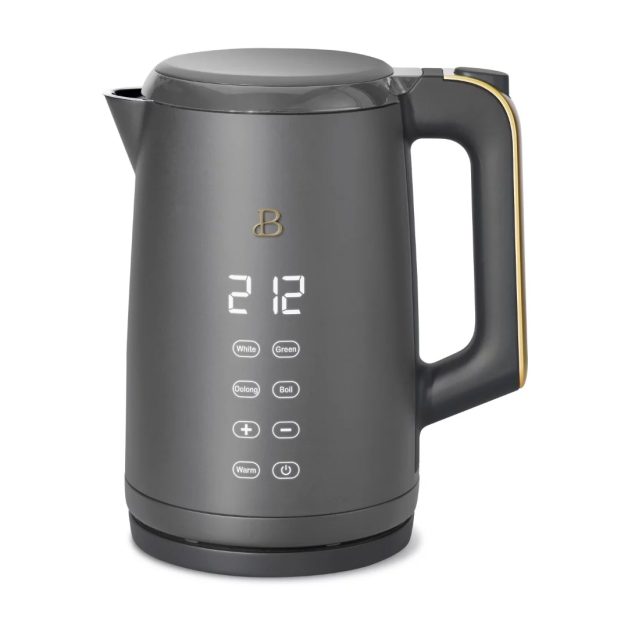
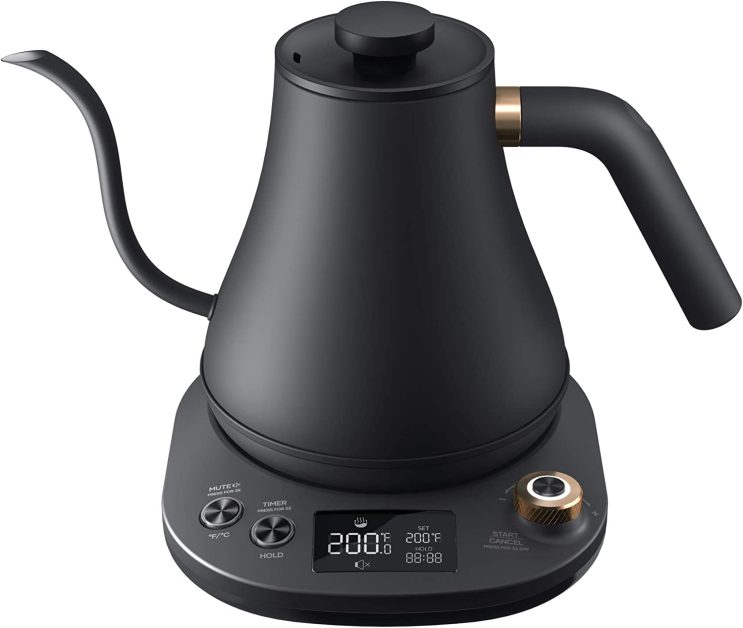
Cordless Electric Kettles Compared
A brief comparison between cordless and corded electric kettles or conventional kettles used on stoves can also highlight differences in how cordless ones work. Cordless electric kettles:
- Run on Electricity – The heating element inside them are heated by electricity, not gas. Although they are usually energy-efficient, they might run up your electricity bill if used frequently.
- Heat Faster – You can expect cordless electric kettles to work faster. The shorter heating time makes them save you more time.
- Heat to a Precise Temperature – Programmable types of cordless electric kettles heat the liquid to a precise temperature before shutting off, which is impossible with conventional kettles heated on a stove.
- Are More Portable – The portability of cordless electric kettles means you can let them work for you anywhere instead of in a fixed location.
- Are Easier to Use – You may find corded electric kettles are easier to use. The workflow is safer and easier. It doesn’t require judging whether the water is hot enough or handling wires while cleaning them. However, since they are made of plastic, they are more prone to catching fire if, for example, the thermostat fails.
Wrapping Up
This article set out to explain how cordless electric kettles work. We identified the main external and internal parts of this type of kettle, described some common features, outlined the general process of how they work, and explained it in detail. We also identified the main subtypes and compared cordless electric kettles with non-cordless and non-electric kettles to highlight further points that differentiate how cordless ones work.
Take a look at some of our related articles below.
- How to test water heater element without multimeter
- What size wire for electric stove
- How much does a pool raise your electric bill
References
[1] Graeme Duckett. A history of the electric jug. Retrieved from https://www.stuff.co.nz/life-style/homed/kitchen/109769697/graeme-duckett-a-history-of-the-electric-jug. 2019.
[2] D. M. Murray, J. Liao, L. Stankovic & V. Stankovic. Understanding usage patterns of electric kettle and energy saving potential. Applied Energy, vol. 171, pp. 231-242. 2016.
[3] B. Quail. Electrical workmanship. FET College Series. Pearson Education. 2009.
[4] S. C. Bhargava. Household electricity and appliances. BSP Books. 2020.
